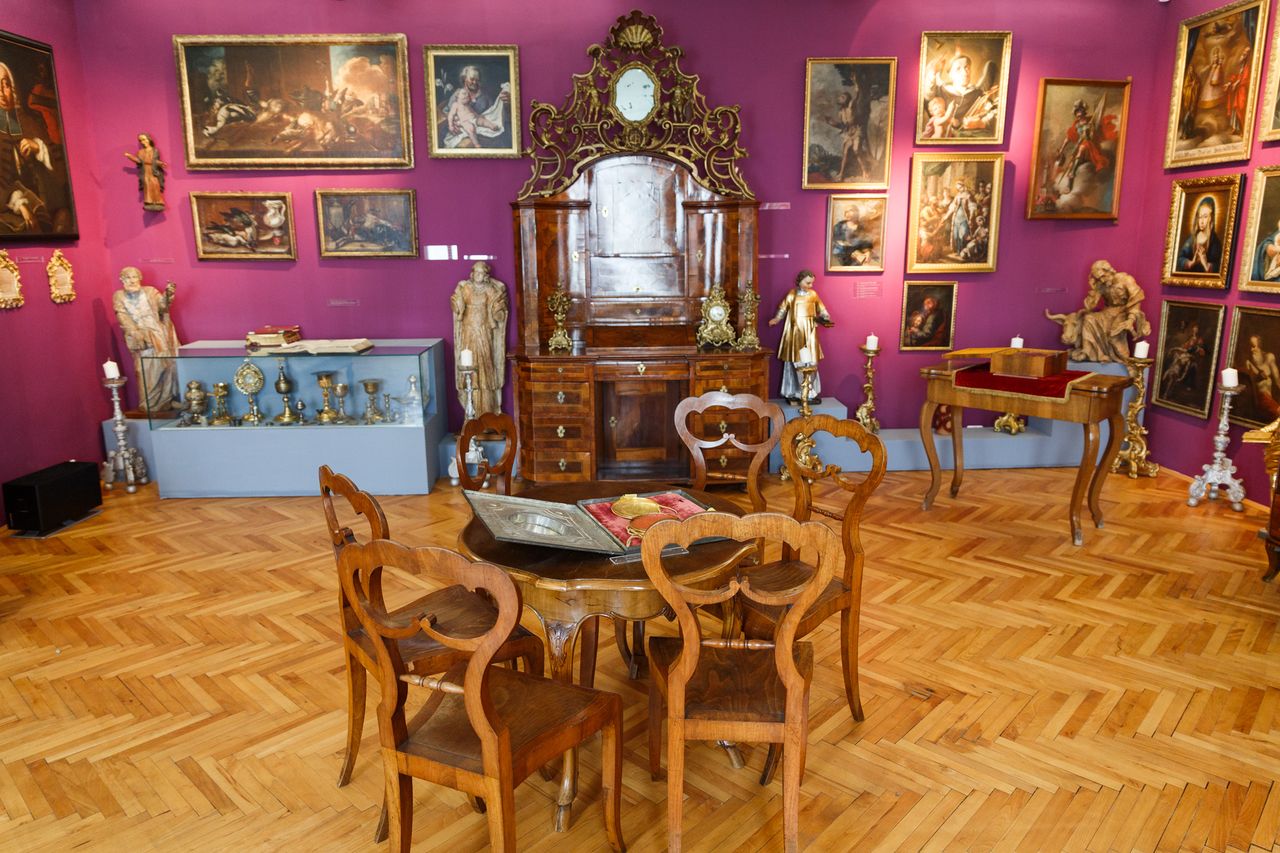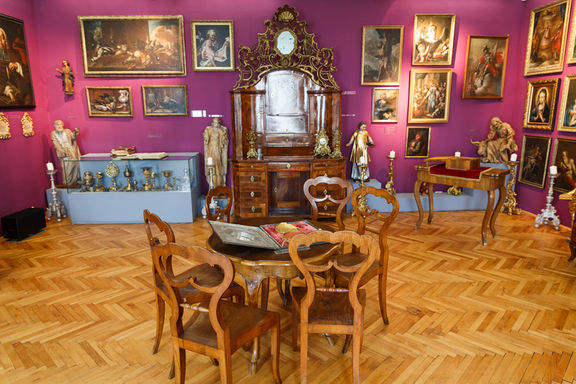Difference between revisions of "Soklič Collection"
Anže Zorman (talk | contribs) (Updated 2020) |
|||
| (6 intermediate revisions by 2 users not shown) | |||
| Line 1: | Line 1: | ||
{{Article | {{Article | ||
| − | | status = | + | | status = TOPROOFREAD NIFERTIK! PHOTO |
| − | | maintainer = | + | | maintainer = Admin |
}} | }} | ||
{{Infobox | {{Infobox | ||
| − | | name = Soklič | + | | name = Soklič Collection |
| − | | localname = | + | | localname = Sokličeva zbirka |
| − | | street = | + | | street = Glavni trg 24 |
| town = SI-2380 Slovenj Gradec | | town = SI-2380 Slovenj Gradec | ||
| − | | map =https://www.openstreetmap.org/?lon=15.07944&lat=46.50888&zoom=17&layer=mapnik | + | | map = https://www.openstreetmap.org/?lon=15.07944&lat=46.50888&zoom=17&layer=mapnik |
| − | | telephone = 386 (0) 2 | + | | telephone = 386 (0) 2 621 2520 |
| − | | fax = | + | | fax = |
| email = info.sg@kpm.si | | email = info.sg@kpm.si | ||
| − | | website = | + | | website = https://www.kpm.si/razstave/jakob-soklic-1893-1972-in-sokliceva-zbirka/ |
| managed by = Koroška Regional Museum | | managed by = Koroška Regional Museum | ||
| contacts = {{Contact | | contacts = {{Contact | ||
| Line 24: | Line 24: | ||
{{Wide Image|Soklic Museum 2019 Photo Kaja Brezocnik.jpg}} | {{Wide Image|Soklic Museum 2019 Photo Kaja Brezocnik.jpg}} | ||
| − | [[Jakob Soklič]] (1893–1972) became parish priest of Slovenj Gradec in 1933. As an enthusiastic collector and amateur art historian he soon started collecting various art objects and books. In [[established::1937]] he founded a [[Soklič | + | [[Jakob Soklič]] (1893–1972) became parish priest of Slovenj Gradec in 1933. As an enthusiastic collector and amateur art historian he soon started collecting various art objects and books. In [[established::1937]] he founded a [[Soklič Collection|museum]] which within a short time was named after him. Soklič later bequeathed his collection to the local parish. It has been under the care of the [[Koroška Regional Museum]] since 1996 and became part of its permanent exhibition in 2013. The collection numbers around 1,500 objects, including historical, archaeological and ethnographic objects, paintings, sculptures and traditional arts and crafts objects. |
}} | }} | ||
Soklič was also a researcher and he published the results of his research work before the Second World War, mostly in the Journal for History and Ethnography in Maribor. Several of his articles were of fundamental importance for the art history of Slovenj Gradec and its environments. | Soklič was also a researcher and he published the results of his research work before the Second World War, mostly in the Journal for History and Ethnography in Maribor. Several of his articles were of fundamental importance for the art history of Slovenj Gradec and its environments. | ||
| − | Soklič | + | Soklič Collection is a fine example of a treasure room, a concept which originated and developed from the 16th century up to the modern era - the collector placed the objects into his residential and working environment and lived with them. The display in the [[Koroška Regional Museum]] manages to capture some of its atmosphere. |
== See also == | == See also == | ||
| − | *[[Koroška Regional Museum | + | *[[Koroška Regional Museum]] |
== External links == | == External links == | ||
| − | *[ | + | *[https://www.kpm.si/en/exhibitions/jakob-soklic-1893-1972-and-the-soklic-collection/ Soklič Collestion website] |
{{Gallery}} | {{Gallery}} | ||
| − | [[Category: | + | [[Category:Private museum collections]] |
| + | [[Category:Updated 2020]] | ||
Latest revision as of 13:13, 3 December 2020
Soklič was also a researcher and he published the results of his research work before the Second World War, mostly in the Journal for History and Ethnography in Maribor. Several of his articles were of fundamental importance for the art history of Slovenj Gradec and its environments.
Soklič Collection is a fine example of a treasure room, a concept which originated and developed from the 16th century up to the modern era - the collector placed the objects into his residential and working environment and lived with them. The display in the Koroška Regional Museum manages to capture some of its atmosphere.




